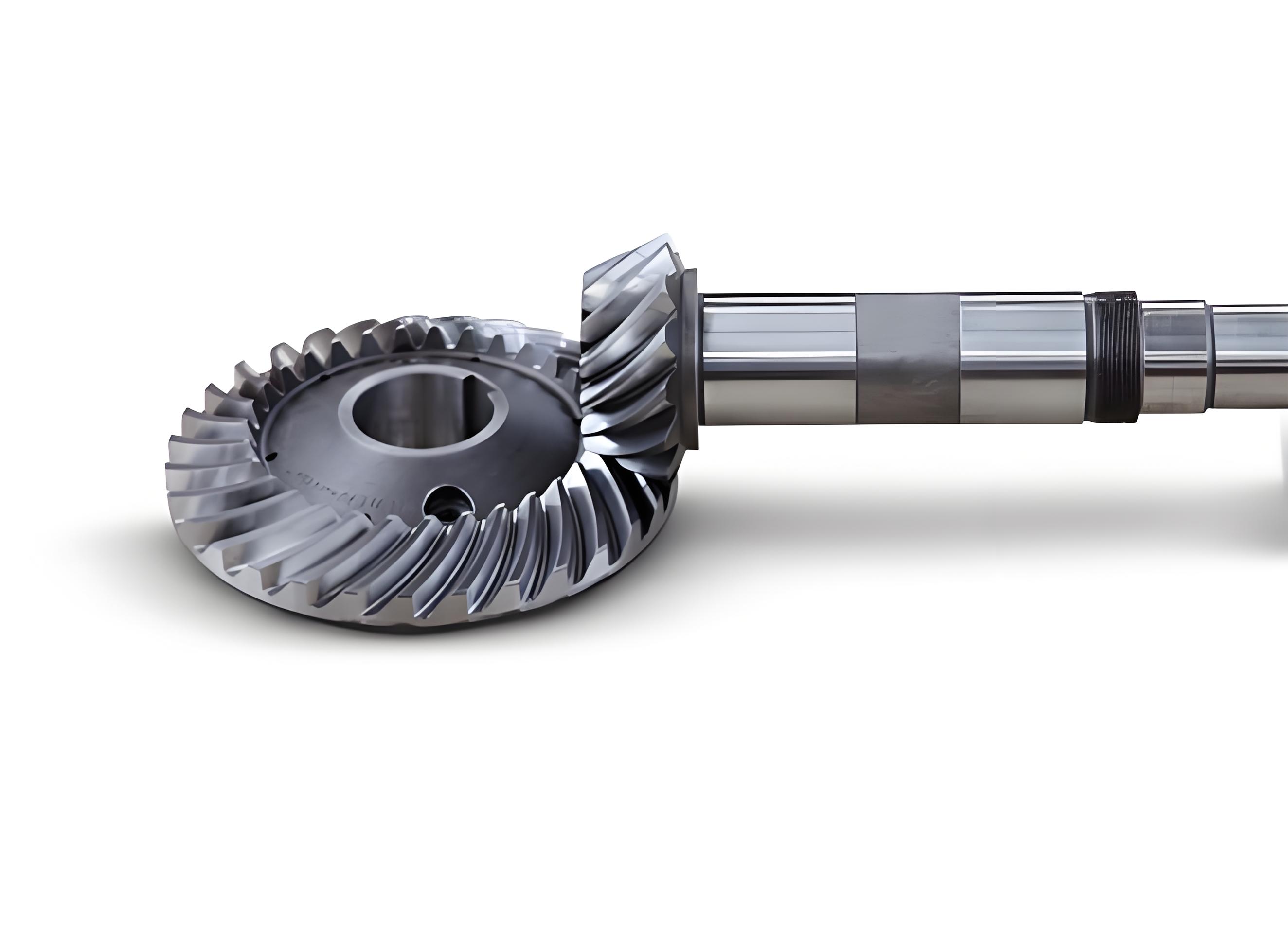Spiral bevel gear is crucial components in various mechanical systems due to their ability to transfer power between non-parallel shafts with high efficiency and reliability. This review comprehensively examines the latest advancements in manufacturing techniques for spiral bevel gear, focusing on enhancing precision, performance, and cost-effectiveness.

Spiral bevel gear is widely used in automotive, aerospace, and industrial applications due to their superior load-carrying capacity and smooth operation. Traditional manufacturing techniques such as face milling and face hobbing have been the mainstay for producing these gear. However, recent advancements in materials, machine tools, and digital manufacturing technologies have revolutionized the production of spiral bevel gear.
Traditional Manufacturing Techniques
- Face Milling: The oldest method, where spiral bevel gear blank is rotated against a cutter to form the gear teeth. While reliable, it is time-consuming and less precise.
- Face Hobbing: An improvement over face milling, this technique uses a hobbing cutter to generate spiral bevel gear teeth, offering better accuracy and productivity.
Advanced Manufacturing Techniques
- Computer Numerical Control (CNC) Machining
- Precision and Flexibility: CNC machines allow for the precise control of cutting tools, leading to higher accuracy and repeatability in spiral bevel gear production.
- Complex Geometries: Capable of producing more complex spiral bevel gear geometries that are difficult to achieve with traditional methods.
- Additive Manufacturing (AM)
- Material Efficiency: AM, or 3D printing, reduces material waste by building gears layer-by-layer.
- Customization: Enables the production of customized spiral bevel gear shapes and sizes without the need for extensive retooling.
- Rapid Prototyping: Accelerates the development of new spiral bevel gear designs by allowing quick prototyping and testing.
- Precision Forging
- Strength and Durability: Produces spiral bevel gear with superior mechanical properties due to the refined grain structure achieved through forging.
- Reduced Machining: Minimizes the amount of subsequent machining required, reducing overall production time and cost.
- Heat Treatment Innovations
- Case Hardening: Advances in heat treatment processes, such as carburizing and nitriding, improve the surface hardness and wear resistance of spiral bevel gear.
- Laser Hardening: A precise, localized heat treatment method that enhances wear resistance without distorting spiral bevel gear geometry.
- Surface Finishing Techniques
- Superfinishing: Techniques like lapping and honing produce exceptionally smooth spiral bevel gear surfaces, reducing friction and noise during operation.
- Coatings: Application of advanced coatings (e.g., DLC, TiN) to improve wear resistance and extend spiral bevel gear life.
- Gear Inspection and Quality Control
- Non-Contact Metrology: Laser scanning and optical measurement systems provide highly accurate, non-contact inspection of spiral bevel gear profiles.
- Digital Twins: The integration of digital twin technology allows real-time monitoring and simulation of spiral bevel gear performance, enabling predictive maintenance and quality assurance.
Challenges and Future Directions
- Integration with Industry 4.0: The adoption of smart manufacturing technologies and IoT for real-time monitoring and control.
- Sustainability: Development of eco-friendly materials and processes to reduce the environmental impact of spiral bevel gear manufacturing.
- Skill Development: Addressing the need for a skilled workforce capable of operating advanced manufacturing systems and interpreting complex data.
Conclusion
The advancements in manufacturing techniques for spiral bevel gear have significantly improved their performance, precision, and cost-efficiency. Continued innovation in CNC machining, additive manufacturing, precision forging, and surface finishing, coupled with the integration of digital technologies, promises to further enhance the capabilities of spiral bevel gear production. Embracing these advancements is crucial for industries seeking to maintain competitive advantages and meet the evolving demands of modern mechanical systems.
References
- Journal of Manufacturing Processes: Various articles on the latest CNC machining techniques for spiral bevel gear production.
- Additive Manufacturing Journal: Studies on the application of 3D printing in spiral bevel gear manufacturing.
- Materials Science and Engineering A: Research on advanced heat treatment processes and their effects on spiral bevel gear performance.
- Precision Engineering: Papers on surface finishing techniques and their impact on spiral bevel gear efficiency and longevity.
This review aims to provide a comprehensive overview of the current state and future prospects in the manufacturing of spiral bevel gear, serving as a valuable resource for researchers, engineers, and industry professionals.
